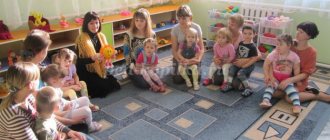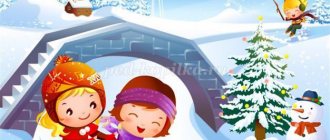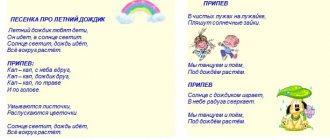Long-term plan for working with parents in the first junior group
Long-term plan for working with parents in the first junior group
Goal: to create in kindergarten the necessary conditions for the development of responsible relationships with the families of pupils, ensuring the holistic development of the preschooler’s personality, to increase the competence of parents in the field of education.
Tasks:
1. Give parents knowledge of various issues in raising and educating children;
2. Contribute to the formation of a trusting attitude of parents towards group educators: respond adequately to the recommendations of group educators, make efforts to establish partnerships with educators to solve problems in raising a child.
3. Involve parents in holding joint events at the preschool educational institution.
SEPTEMBER
| № | Form of work | Target | Responsible |
| 1. | Parent meeting "Welcome" | Give parents the concept of adaptation. Introducing parents to the work of kindergarten. What to do at home so that your child gets used to kindergarten faster. | Manager, teachers. |
| 2. | Joint preparation for the school year. Design of the parent's corner: daily routine, schedule of direct educational activities, introduction to teachers. composition. | Involve parents in active, collaborative work in the new school year. | Educators. |
| 3. | Workshop “Features of development of children in the second year of life.” | To acquaint parents with the changes in development and behavior that occur in children in the second year of life. | Educators. |
| 4. | Folder “Main tasks of development of children in the second year of life.” | To introduce the peculiarities of raising a child of this age; games typical for children 1–2 years old. | Teachers, music director. |
OCTOBER
| 1. | Training “A person needs a family for...”. | Develop family relationship skills; Strengthen positive attitudes towards yourself and others. | Educators. |
| 2. | Take part in the “Gifts of Autumn” craft exhibition competition. | Organization of joint work of parents and children in the manufacture of crafts from natural materials. | Educators. |
| 3. | Consultation “Children's issues”. A stand under the heading “What do our children ask?” (you can place a selection of questions) | Show the importance of children's questions in the development of a preschooler's curiosity, and equip parents to answer them correctly. | Educators. |
| 4. | Questionnaire: “What place does physical education occupy in your family?” Meeting “Toward health through cooperation.” Take part in the group competition “Our Inventions” (production of non-standard physical education equipment). | To study the needs of acquiring practical skills for child health. Involve parents in making ribbon flags for the physical education corner. | Educators. |
| 5. | Seminar “The role of family and kindergarten in shaping children’s health.” Photo newspaper “How we protect our health.” The first round of prevention of acute respiratory infections and influenza. | To interest parents in joint sports activities with children, to cultivate vital activity in children and parents. | Educators. |
NOVEMBER
| 1. | Workshop “Father in a child’s life.” | Lead participants to create and accept the position of the father in the family; understand the role of the father in the upbringing and development of the child’s personality. | Educators. |
| 2. | Conversation “Father and Son”, “Daddy’s Daughter”. | To help understand the characteristics of raising boys and girls at different periods of development. | Educators. |
| 3. | Photo exhibition “Our Pets”. Collecting photo reports in an information folder on the topic “Playing at home.” | Involving parents in co-creating a photo exhibition with their children. Find out what educational games are played at home and how. | Educators, parents. |
| 4. | Wall newspaper with poems “For Mother’s Day”. Collecting photo reports in an information folder on the topic “Secrets of Education.” | Give information about the Mother's Day holiday, Share your experience of successful moments in raising a family. | Educators, parents. |
DECEMBER
| 1. | Folder movement “Let's play together” (selection of games and toys). | To bring parents to realize the importance of play in a child’s life, to introduce them to the features of play for children of this age group; give parents examples of family games with their child; help understand the responsibility of adults for choosing children's toys. | Educators. |
| 2. | Crafts exhibition competition “Soon, New Year is coming!” | Organization of joint work of parents and children in the manufacture of New Year's toys from a variety of materials. Develop imagination and interest, the desire to make the toy beautiful. | Teachers, parents, children. |
| 3. | Folder movement “In winter we walk, watch, work, play!” (about the importance of winter walks). | Provide information about walks in kindergarten, events and activities on the street, outdoor games. Foster a desire to actively spend time with children outside. | Educators. |
| 4. | New Year's carnival. | Making New Year's costumes, taking part in a matinee, reading poetry. Get positive emotions from the holiday, satisfaction from participation, foster unity and sociability. | Teachers, parents, children, music director. |
JANUARY
| 1. | Action “Help those around you” (making bird feeders). | To instill a love for animals, parents and children work together to make bird feeders. | Teachers, parents, children. |
| 2. | Parent meeting “Child and Book” | To familiarize parents with methods for introducing a child to a book. To create in parents an interest and desire to instill a love of reading children's literature. | Manager, teachers. |
| 3. | Design of a visual campaign “Children’s safety at home.” | Familiarize yourself with the rules for handling household appliances. | Educators. |
FEBRUARY
| 1. | Consultation: “What fairy tales to read to children.” “Give a book” campaign. | Draw the attention of parents to the possibilities of intellectual development of the child in the family and kindergarten by selecting fiction. | Educators. |
| 2. | Folder – movement “Articulation gymnastics”. | Draw the attention of parents to the possibilities of developing the child’s communication sphere in the family and kindergarten. | Educators. |
| 3. | Exhibition of children's works "Planet of Creativity". | Support the desire of parents to develop the artistic activities of children in kindergarten. | Teachers, children. |
| 4. | Photo newspaper “My best dad!” Leisure “We’ll move mountains together with dad.” | Involve mothers and children in the design of the exhibition and congratulations for Defender of the Fatherland Day. Foster a desire to give gifts and be creative. Invite dads to participate in the event. | Teachers, parents, children. |
MARCH
| 1. | Organizing a photo exhibition with stories about mothers. “My beloved mommy!” (design with children's drawings). Entertainment “Dear Mommy, My Mother” | Involve dads and children in decorating the exhibition and congratulations for March 8th. Foster a desire to give gifts and be creative. To create in parents and children a desire to participate in a joint holiday, to receive positive emotions, and a sense of teamwork. | Teachers, parents, children, music director. |
| 2. | "Day of Self-Government" Photo report “Our successes in the days of self-government!”, exhibitions of productive activities from classes. | Involve parents in raising children, teach how to manage a group of children, carry out tasks with them, bring things to the end, and cultivate self-confidence. | Educators, parents. |
| 3. | Photo exhibition "Birthday - a holiday of childhood." | Involve parents in active life in a group and the ability to spend leisure time with their children. | Teachers, parents, children, music director. |
| 4. | Joint physical education “I want to play with my dad, with my mom!” | Receive positive emotions, satisfaction from joint participation in entertainment, cultivate unity and sociability. | Teachers, parents, children, music director. |
APRIL
| 1. | Thematic exhibition of drawings “In Flight” dedicated to Cosmonautics Day (joint work of children and parents). | Involving dads in raising children and conducting joint activities. Cultivate a desire to be active. | Educators, parents. |
| 2. | Photo newspaper with poems “Spring walk in kindergarten.” Folder movement “In the spring we walk, watch, work, play!” (about the importance of spring walks). | Provide information about walks in kindergarten, events and activities on the street, outdoor games. Foster a desire to actively spend time with children outside. | Educators, parents. |
| 3. | Photo exhibition “My child in kindergarten”. | Parents and teachers jointly prepare photographs of children in kindergarten | Educators, parents. |
| 4. | Consultation “Walks and their importance for promoting child health” Information folder: “A walk is important!”, “Active recreation, what is it like?!”, “Games in nature!”. | To provide knowledge about the importance of active outdoor recreation, parental participation in games, and to cultivate interest in the needs and requirements of the child. | Educators. |
MAY
| 1. | Organization of an exhibition of crafts for Victory Day. Information files “My relatives defended the Motherland.” | Invite parents to participate in the day of remembrance of participants in the Second World War, creatively making crafts from any material. Cultivate a desire to know more about relatives. | Teachers, parents, children |
| 2. | Consultation “How to get rid of an unwanted habit” | Draw the attention of parents to the bad habits of children. Tell them how to get rid of them. | Educators. |
| 3. | Parent meeting “Question and Answer Evening” - results for the year. Questionnaire “Satisfaction with the work of preschool educational institutions.” | Provide information about the successes of children at the end of the school year, introduce innovative work for the summer, talk about the summer operating hours of the kindergarten, and prepare parents for the beginning of the next year. | Manager, teachers. |
| 4. | Preparing the site for the summer period. Folder - moving: "What to do with a child in the summer." | Involve parents in preparing the group for the summer work period, provide information on how to spend the summer with their child. | Educators. |
Get text
Game workshop for parents of a nursery group of a kindergarten
Game workshop for parents of a nursery group: “Journey to the Land of Sensorics.”
Author Svetlana Vasilievna Nazarenko Teacher of MBDOU No. 72 “Dolphin”.
The material presented in this article will be useful to teachers of nursery and junior groups when preparing parent-teacher meetings.
Goal: Enriching parental ideas about the sensory development of toddlers. Objectives : to introduce parents to games that promote the sensory development of children 2-3 years old; strengthen cooperation between parents and the teaching staff of the group. Dear parents! Today I would like to introduce you to the methods and techniques that we use to develop sensory culture in children. But first, a little theory. The sensory development of a child is the development of his perception and the formation of ideas about the external properties of objects: their shape, color, size, position in space, as well as smell, taste, etc. Sensory development, on the one hand, forms the foundation of the child’s general mental development, on the other hand, it has independent significance, since full perception is necessary for the successful education of a child in kindergarten, at school, and for other types of work. Knowledge begins with the perception of objects and phenomena of the surrounding world. All other forms of cognition - thinking, memorization, imagination - are built on the basis of images of perception. Therefore, normal mental development is impossible without relying on full perception. If we look at the main areas in preschool education, then in each of them it is necessary to use knowledge about surrounding subjects. So, for example, in visual activity, in order to draw an object, a child must quite accurately grasp the features of its shape and color. When we walk outside as children, we observe natural phenomena: we talk about the color of the sky, leaves, grass, and what shape puddles look like. The formation of elementary mathematical concepts involves familiarity with geometric shapes and comparison of objects by size. Of great importance in sensory education is the formation in children of ideas about sensory standards - generally accepted examples of the external properties of objects. The sensory standards of color are the seven colors of the spectrum and their shades of lightness and saturation, the standards of form are geometric shapes, and the values are the metric system of measures. At each age, sensory perception faces its own tasks, and a certain element of sensory culture is formed. Now your kids are two years old. At this age, children should be introduced to the six colors of the spectrum, white and black, with shapes such as circle, square, oval, rectangle. At this age, children should not be required to memorize and correctly use the names of colors and shapes. The main thing is that the child is able to take into account the properties of objects while operating with them. The main techniques for studying the properties of objects at this age are comparison, juxtaposition and superimposition of objects. And since the main activity of a preschooler is play, all learning of sensory culture takes place in a playful form. Now I invite you all to stand in a circle. Forget for a while that you are adults, become children and let's play. Everyone quickly stood in a circle, everyone suddenly held hands. We will stand next to each other. We will close our eyes. Now let’s start spinning and turning into children. I will give you ribbons, I will give you bows! Let's quickly dress up for the trip! The locomotive has been waiting for us for a long time, taking us to the land of Sensorics! The sound of wheels is heard, the parents become a “train”, the teacher is in front. 1. Attention, our train has arrived at the “multi-colored” station.
Game “Give cubes to the dolls.” Goal: to strengthen in children the ability to group homogeneous objects by color. In front of you sit dolls in outfits of four primary colors: red, yellow, blue, green. The dolls want to play with blocks. But the dolls only want to play with their blocks. Help them. During the game, children are divided into pairs. We agree on who will look for the cubes for which doll. The game “The mosaic crumbled.” Goal: to strengthen in children the ability to group homogeneous objects by color. Form fine motor skills of the fingers. A mosaic of four or two colors is scattered on the table. Next to them are cups of the same color. We need to assemble the mosaic one cup at a time. For this game, you can use any material that is available in the group or at home: pencils, beads, etc. Game "Find a Pair". Goal: develop children’s attention and reaction, consolidate knowledge of colors. Each parent is invited to wear a cape in one of four colors. While the music is playing, we fly and spin like butterflies. As soon as the music ends, each butterfly looks for a mate (two people in identical capes). Game "Find your house"
Goal: develop children’s attention and reaction, consolidate knowledge of colors. The same capes and playing field with multi-colored circles for the game “Twister” are used. The music is playing and everyone is dancing. After the end of the music, everyone must take their own “house”, which corresponds to the color of the cape. 2. The music is playing and the train moves on. Our train arrived at the Figurnaya station. Game "Place the figures in the crib." Goal: learn to correlate objects by shape. Each has a sheet with the outlines of figures: a triangle, a circle, a square - these are cribs. And the “little men” figures are tired and want to sleep, each in his own crib. Well, our journey has come to an end. Today you got to know in practice the games we play with children. All these games do not require complex materials, require individual work with the child and are therefore available at home.
Used literature: L.A. Wenger "Education of a child's sensory culture." Poem by E.V. Khusnutdinova.
We recommend watching:
Summary of the parent meeting in the form of a business game for kindergarten Parent meeting in the first junior group. Summary of Parents' meeting in the nursery group. Abstract Non-traditional parent meeting in an early age group with presentation
Similar articles:
Parent meeting in the middle group. Family traditions
Parent meeting in the middle group. Our grandparents in the family
Parent meeting in the middle group. Child's emotional well-being
Parent meeting in the middle group on the topic “Healthy lifestyle”
Parent meeting in the middle group. Reading fiction


